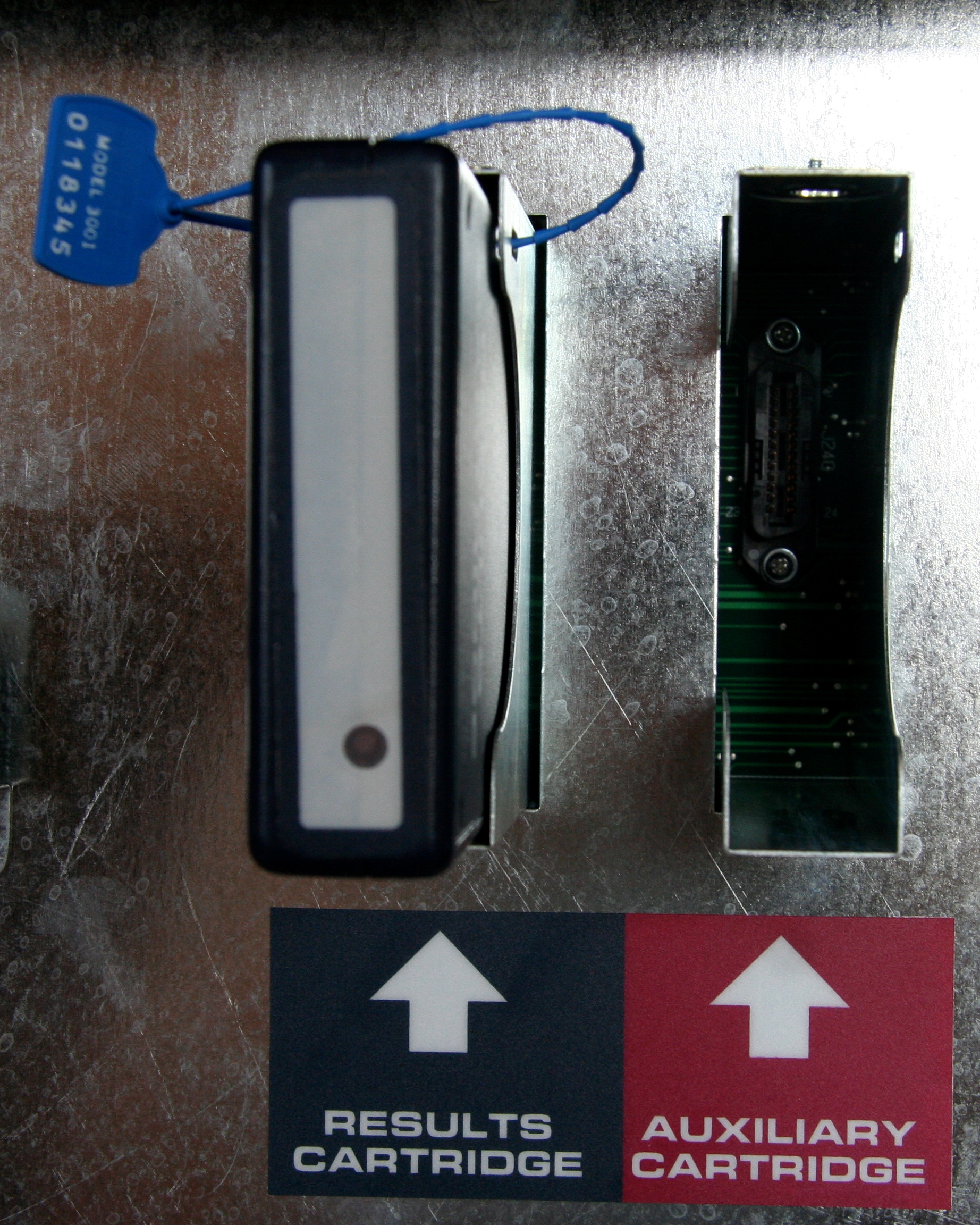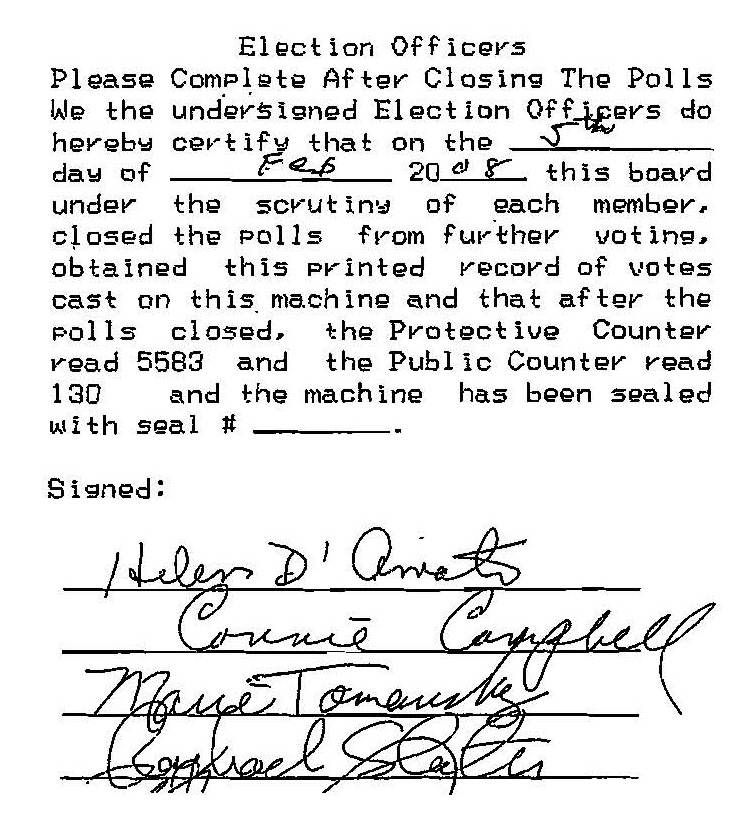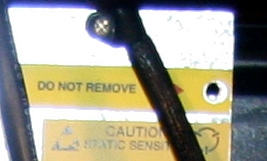I have just released a new paper entitled “Security seals on voting machines: a case study“ and here I’ll explain how I came to write it.
Like many computer scientists, I became interested in the technology of vote-counting after the technological failure of hanging chads and butterfly ballots in 2000. In 2004 I visited my local polling place to watch the procedures for closing the polls, and I noticed that ballot cartridges were sealed by plastic strap seals like this one:

The pollworkers are supposed to write down the serial numbers on the official precinct report, but (as I later found when Ed Felten obtained dozens of these reports through an open-records request), about 50% of the time they forget to do this:

In 2008 when (as the expert witness in a lawsuit) I examined the hardware and software of New Jersey’s voting machines, I found that there were no security seals present that would impede opening the circuit-board cover to replace the vote-counting software. The vote-cartridge seal looks like it would prevent the cover from being opened, but it doesn’t.
There was a place to put a seal on the circuit-board cover, through the hole labeled “DO NOT REMOVE”, but there was no seal there:

Somebody had removed a seal, probably a voting-machine repairman who had to open the cover to replace the batteries, and nobody bothered to install a new one.
The problem with paperless electronic voting machines is that if a crooked political operative has access to install fraudulent software, that software can switch votes from one candidate to another. So, in my report to the Court during the lawsuit, I wrote,
10.6. For a system of tamper-evident seals to provide effective protection, the seals must be consistently installed, they must be truly tamper-evident, and they must be consistently inspected. With respect to the Sequoia AVC Advantage, this means that all five of the
following would have to be true. But in fact, not a single one of these is true in practice, as I will explain.
- The seals would have to be routinely in place at all times when an attacker might wish to access the Z80 Program ROM; but they are not.
- The cartridge should not be removable without leaving evidence of tampering with
the seal; but plastic seals can be quickly defeated, as I will explain.- The panel covering the main circuit board should not be removable without removing the [vote-cartridge] seal; but in fact it is removable without disturbing the seal.
- If a seal with a different serial number is substituted, written records would have to reliably catch this substitution; but I have found major gaps in these records in New Jersey.
- Identical replacement seals (with duplicate serial numbers) should not exist; but the evidence shows that no serious attempt is made to avoid duplication.
Those five criteria are just common sense about what would be a required in any effective system for protecting something using tamper-indicating seals. What I found was that (1) the seals aren’t always there; (2) even if they were, you can remove the cartridge without visible evidence of tampering with the seal and (3) you can remove the circuit-board cover without even disturbing the plastic-strap seal; (4) even if that hadn’t been true, the seal-inspection records are quite lackadaisical and incomplete; and (5) even if that weren’t true, since the counties tend to re-use the same serial numbers, the attacker could just obtain fresh seals with the same number!
Since the time I wrote that, I’ve learned from the seal experts that there’s a lot more to a seal use protocol than these five observations. I’ll write about that in the near future.
But first, I’ll write about the State of New Jersey’s slapdash response to my first examination of their seals. Stay tuned.

Don’t forget that tamper-free seals aren’t.
http://www.schneier.com/blog/archives/2011/01/hacking_tamper-.html